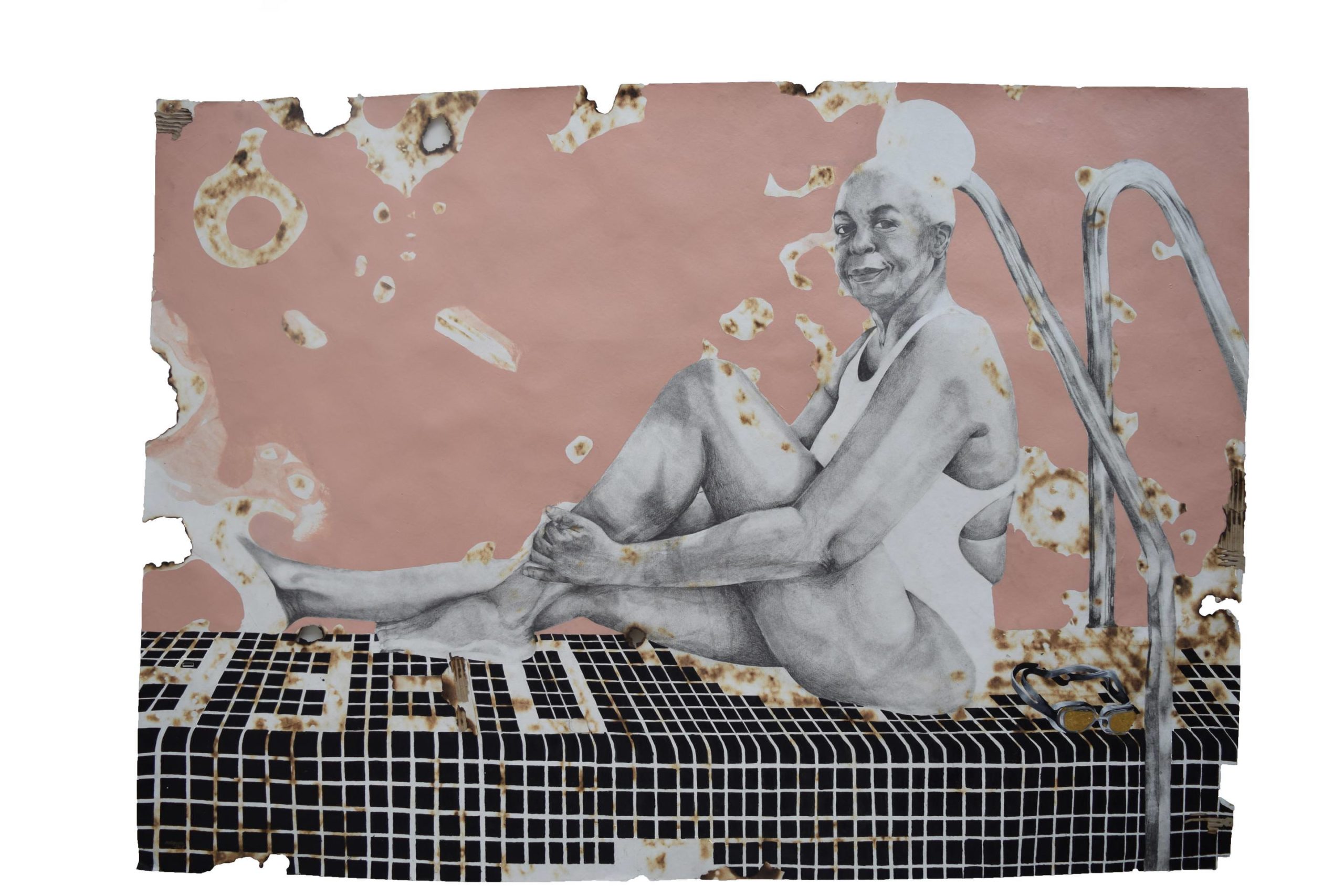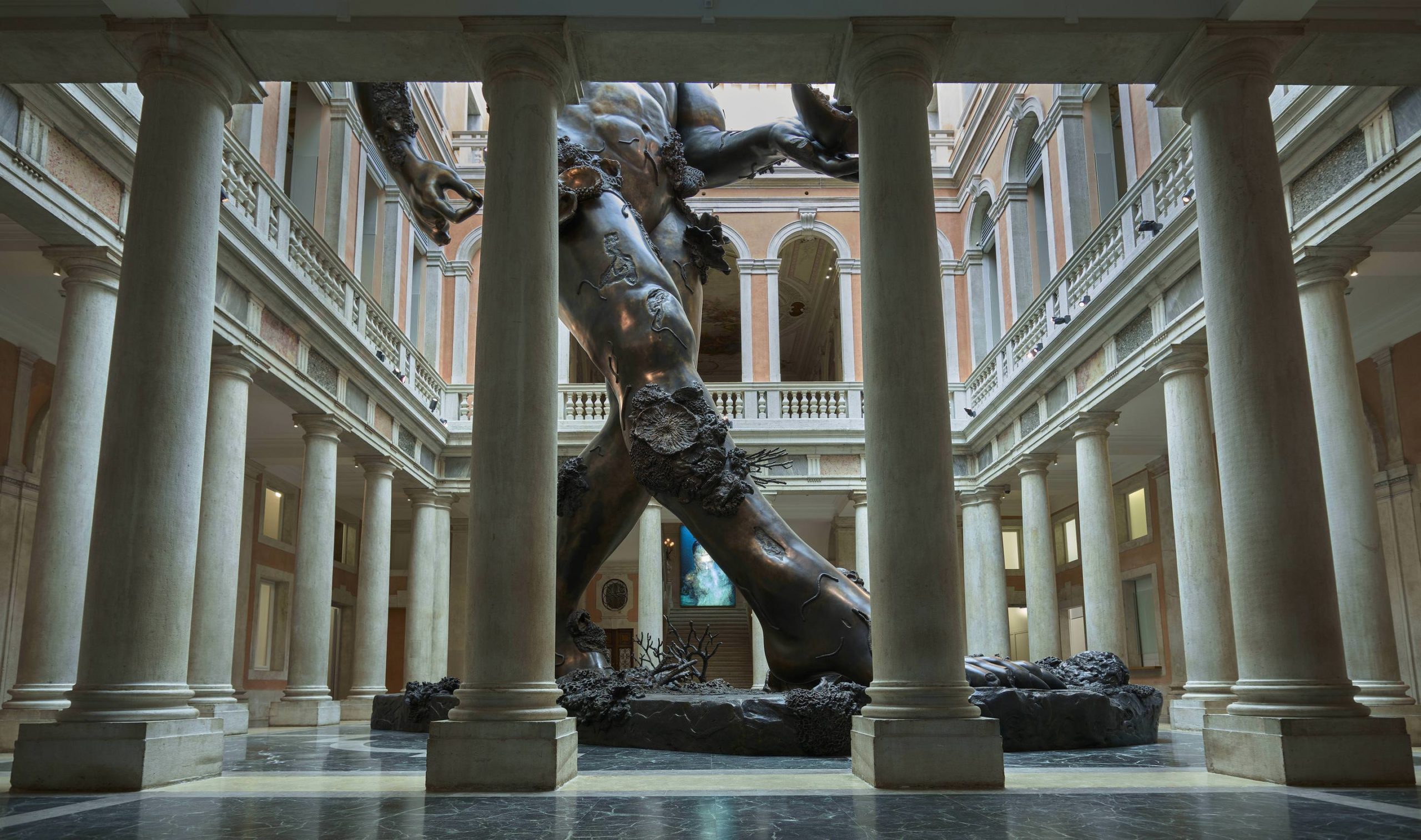Pools have always been special places for the artist Modupeola Fadugba. For her whole life, the activity of swimming has provided a sense of health, creativity, and confidence. In time, it became a major source for the Togo-born Nigerian’s practice. Relating diving to her own personal plunge into the role of an artist (her background is in economics, engineering, and education), her recent body of work was on view at Gallery 1957 in Accra, Ghana, in “Dreams from the Deep End” (August 25–November 27, 2018).
The show was the result of a residency at International Studio & Curatorial Program (ISCP) in New York. During that period Fadugba chose to spend time with the Harlem Honeys and Bears, a synchronized swimming team of senior citizens. Whitewall spoke with the Abuja-based artist about the evolution of the pool from a competitive space to one of collaboration, and how that compares to her own journey.
WHITEWALL: How did you come to shadow the Harlem Honeys and Bears?
MODUPEOLA FADUGBA: I’ve been working with the subject of the swimmer for a while now, almost three years. And that slowly morphed into looking at synchronized swimmers. At the time, I was just more interested in the formation, looking at the geometric patterns that the swimmers formed. But in my research, and having the feedback of various audiences asking, “What swimmers are you observing?” I started looking for real swimmers and stumbled upon the Harlem Honeys and Bears, which is an all-black co-ed synchronized swimming team for senior citizens in Harlem.
It was something I catalogued and always wanted to visit if I ever had the chance to be in New York for an extended period of time. And so, once the opportunity to do the International Studio & Curatorial Program residency arose, I decided to align my research with the Harlem Honeys and Bears.
I started shadowing them, working with them, and they really transformed the way I worked and the way I looked at collaboration within my art practice.
WW: And that collaborative aspect was new for you?
MF: I’d always been interested in collaboration prior to working with them. I actually worked with a group of synchronized swimmers at a high school in Nigeria. And not only did I use their pictures to inform some of the paintings that I created, but those young swimmers performed to a poem-turned-song that I wrote. So there was this element of performance.
But I guess in crossing over to working with the older swimmers in a city like Harlem, it’s quite different. I’m outside of my own space and home and comfort zone in a place like New York City, and working with senior citizens is really quite different from working with young children. I was constantly there. I was constantly on-site with them.
WW: What attracted you to painting swimmers, initially?
MF: I personally swim, quite frequently—about two or three times a week. I’m sort of reluctant to say that it’s because I swim that I’m inspired by that. I knew there was something there, but I don’t think I necessarily made the direct connection. I don’t necessarily photograph myself swimming, but the first analogy that came to mind was comparing the swimmer with artists, really, and my plunge or foray to the art world about four or five years ago. It reminded me of that idea of jumping into unfamiliar terrain and trying to navigate it as best possible with little to no knowledge. There are no rules, necessarily, or blueprints for younger artists to employ. And so that was my first sort of metaphor or analogy, for the dive of a new swimmer to that of a new artist.
The earlier works, those are quite different from now. The swimmers are competing in a pool with a red ball, sort of like water polo. So the series evolved from a competitive space to be more of a collaborative space, and I think it very much mirrors my own journey as an artist.
WW: Where is your primary studio right now?
MF: My primary studio is in Abuja. For the last few years I’ve spent far more time outside of Abuja than in Abuja, but that’s where all my stuff is.
WW: The public pool has a weighted history tied to race and access in the U.S., of course. And for some of the Harlem Honeys and Bears, they didn’t learn to swim until after 60. So the series also addresses the idea of exploring a new kind of creativity in the later part of someone’s life.
MF: There are so many layers with the work and with the team as well. One of them, as you pointed out, is what does one do later on in life when you have time on your hands. I was talking to somebody about this yesterday—the life expectancy has increased so drastically with all the technology that’s available for to us medically. We actually have to start thinking about what type of work do you want to do, and how is that going to change over the course of your life? And when you stop working and it’s time to relax, play, and enjoy leisure time, how do you choose to spend that?
One thing that I find really interesting about the Harlem Honeys and Bears is that they are all well above 60s, 70s. The eldest member is 96, and they all live in the city. They all either walk or bike to the swimming facility for practices, maybe have lunch, and then they go home. All of them are very independent and creating their own communities, staying healthy, staying active, and also giving back to the younger generations by teaching young children in the community to swim for free.
WW: After your ISCP residency, what are you looking at next?
MF: I think I just scratched the surface with this community. I don’t think I’ve necessarily taken it all in. There’s a lot of room for growth with the project.










